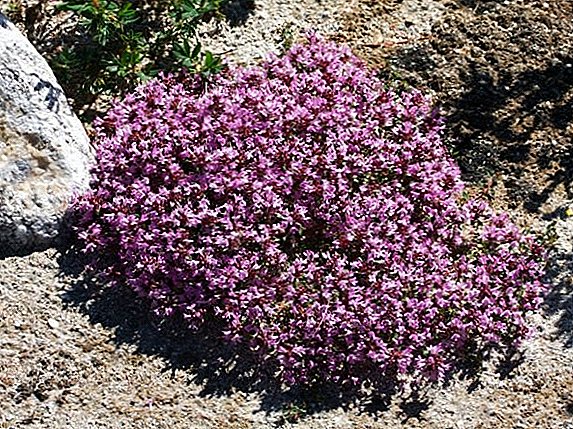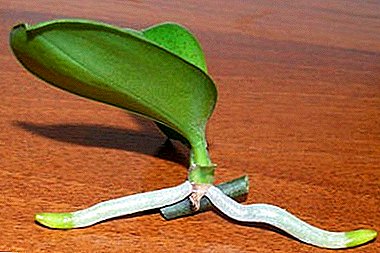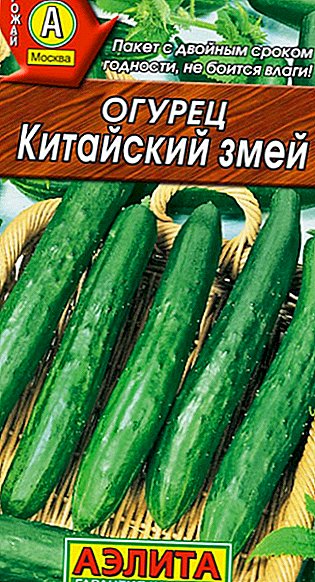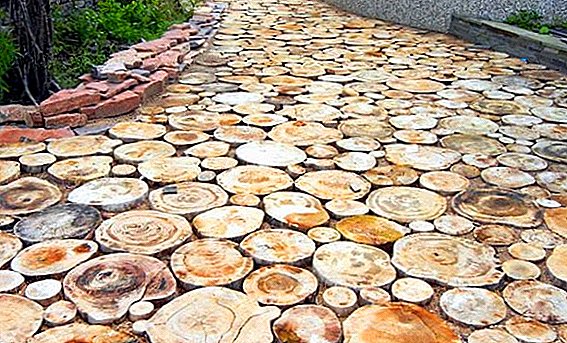 The tracks on the summer cottage are not only a necessary element for marking the territory and moving around the site. It is also an element of decor that carries an aesthetic load. The process of creating summer alleys is simplified due to the availability of the necessary tools and materials in the stores. The form and material of manufacture depend only on your preferences.
The tracks on the summer cottage are not only a necessary element for marking the territory and moving around the site. It is also an element of decor that carries an aesthetic load. The process of creating summer alleys is simplified due to the availability of the necessary tools and materials in the stores. The form and material of manufacture depend only on your preferences.
Guide, how to make a path of wood cuts
To perform the work you will need tools for processing and preparation of wood dies, preparatory and paving tools for pedestrian alleys and building materials: geotextiles, sand, gravel, round timber, cement and others.
List of required tools and materials
The basic list of tools almost does not change, whatever material you choose. You will need:
- spade and shovel sovkovaya to create a trench, remove the soil and backfill building materials;
- angle grinder (Bulgarian) for cutting of a covering material and disks to it. Cutting discs for the grinder are selected depending on what material you cut: wood, tile or stone;
- measuring tape on 5 or 10 m;
- level for marking and control styling;
- building cord for marking;
- garden rake for leveling bulk material in the track. Sand can be leveled with the reverse side of the rake (not toothed) or use a special sanding trowel;
- garden car for transportation of material;
- construction trowel for sanding and concreting;
- rubber mallet for laying and settling coating;
- water tanks;
- vibrating plate for tamping rubble, sand, cover the track. If the layers are not compacted, they will begin to sag under the action of moisture. To prevent subsidence, use a vibrating plate. Tools can be rented from construction equipment stores;
- for the path of the wood cuts need sanding machine for wood processing.












Important!So that garden alleys do not overgrow with grass in summer and do not freeze in winter, when designing, it is necessary to envisage inclination to one side or to both sides of the center. In the second case, the center of the alley will be above its sides.
Auxiliary construction materials:
- decorative cover is placed on the "pillow". Its purpose is to keep the shape of the track and prevent the soil from deforming. Sand and gravel will be used for the double layer pad;
- geotextiles are used to stabilize the soil - a canvas with a width of 2 to 6 meters isolating different layers of soil to protect the surface from failures;
- planking will need boards;
- you will also need basic material. In this case - it is round timber. The round timber is cut into circular saw cuts for decorative coating.
You can also make a pergola with your own hands, a flower bed of wheel tires or stones, a wattle fence, gabions, rock arias, a ladybug, a veranda, a cellar, a fence for beds, a solar wax refinery, a brazier, an arbor and a garden swing.
Preparation of cuts
To create a path from wood cuts, choose dry round timber or logs of different diameters. Preparation consists of two points: preparation of the main covering - wood dies and preparation of the place for the future path.
Wood preparation:
- we clean the logs from the knots and level the grinding machine. We conduct stripping of bark at will. If the bark is thick and gives originality to the cut, then it can be left;
- we saw logs on round dies. The size of the plate should be from 10 cm and more, because the base will be in the path, and the decorative part will protrude above its surface;
- dies are treated with antiseptic against pests and varnish from moisture. The lower part is treated with bitumen mastic or tar. The upper part is treated with varnish;
- as over time the wood darkens under the influence of ultraviolet, then in the upper part You can use wood stain and dark acrylic lacquer.




Did you know?The first garden paths of wood are known from the history of landscape design in China. The longevity of such alleys depends on the quality of the material. Hard and very hard wood is more durable. Apple trees, walnut, birch, beech, mountain ash and ash are common in the steppe and forest-steppe zones. And the highest quality track will come out of acacia - it belongs to very hard wood.
Track markup
The contour of the track mark building cord. For a curved track, use extra pegs at the bend points. Evaluate the work done and, if necessary, correct the planned lines.

Right angles are controlled by the Pythagorean triangle with an aspect ratio of 3: 4: 5. Circles mark the building cord of the desired length. If wooden dies are laid out in the form of patterns, then marking of the centers and borders of the patterns will be required before the material is laid. The recommended width is 35 cm, which corresponds to the width of an ordinary person.
Read also how to build a fountain and waterfall in the country with their own hands.
Foundation preparation
The next step is to prepare the trench for the future path. The width is marked with a building cord. The depth will be 25-50 cm, depending on the thickness and structure of the pillow. Sequencing:
- bayonet shovel outlines the boundaries of excavation;
- the fertile soil layer is removed and transferred to another place on the site. It can be used for arranging flower beds or pouring them beds;
- for a trench with crumbling soil along the edges make slopes. Encountered plant roots are removed. The soil from the trench is taken out from the site by a garden cart;
- level check the depth of the pit and the horizontal.




Drainage fill
According to the contour of the pit, a formwork of planks is installed. Pour a layer of gravel into the trench as a base and drainage layer and compact it with a vibrating plate. To enhance compaction, gravel is moistened with water.

The purpose of the drainage layer is to remove rainwater from the alley.
Did you know?The use of synthetic fabrics in road construction began in the first half of the last century. Now geotextile reinforce the slopes and shores from falling, used in drainage systems and road construction. On the summer cottage with the help of geotextiles form terraces and alpine slides, create artificial reservoirs.
Pillow filling
Covering the bottom of the trench and side walls with geotextiles. It prevents the contact of different layers of soil and blocks the leaching of its upper layers, functioning on the principle of a double action filter. Material varies in density. For the garden path applies a density of 200-250 g / sq. m. For stacking wood cuts used two-layer pillow. The bottom layer of the pillow is formed by sand, and the top - by gravel or pebbles. Gravel does not accumulate moisture, which will prevent wood from breaking.

The thickness of the sand layer is 10 cm. For the accuracy of laying, you can apply a marker of the height of the layer on the geotextile with a marker. Each layer is compacted with a vibrating plate. Sand or gravel moistened with water for compaction. The density of the compacted layer of sand must be such that when moving along it there will be no traces. A layer of geotextile is laid between the sand and gravel.
For decoration of your garden, you can form a hedge, for it is often used deren, barberry Turnn, thuja, spirea, lilac, irgu, rosehip, blister tree, black chokeberry, boxwood, forsythia, privet, hawthorn.
Curbing
On the geotextiles on the sides of the pit laid out a solution of lean concrete B7.5. On the concrete set curb round. Possible options for the curb - stone or concrete walls.
Important!Lean concrete contains a low amount of cementitious cement. Such concrete is subject to cracking. To avoid this, it is necessary to add a bituminous mixture.
Laying saw cuts
When the curb is rigidly fixed with cement (after 4-5 days), begin laying the main part of the track covering. The pillow is poured with a cement mortar liquid consistency. When setting the cement, a centimeter (thin) layer of cement-based glue is added on top of the cement. Wood dies are placed on this layer and fill the space between them with gravel or pebbles.

Since the shape and diameter of the dies are different, it is recommended to come up with a scheme or pattern for laying wood saw cuts on the alley. Cuts can remain in their natural color scheme, but they can also be painted with paints.
Forms of laying saw cuts on the track can be different:
- the simplest form of laying - rows of round dies along the entire length of the alley. At the same time, even lines slightly shift relative to odd ones on the mosaic principle;
- rows of multi-colored wooden dies will form an elegant mosaic panel;
- laid out in the form of small groups among gravel or pebbles, saw cuts will create the illusion of sea islands, which is very useful for children's games;
- more original alleyki get curly dice. Dies in the shape of semicircles can be placed with a herringbone or in the form of flower petals around a single center.




Care of the tracks
Once a year the wooden parts (sawn) must be cleaned with a metal scraper, process with antiseptic and cover with a protective layer (paint or linseed oil). Emerged weeds are removed to preserve the integrity of the alley. Also in the autumn it is necessary to regularly remove falling leaves from the track. In winter, you need to clean the snow. A small amount is swept away with a whisk, and a large layer is removed with a shovel. It is not recommended to use chemical reagents for snow cleaning - this can spoil the look of the track.
Learn how to choose a lawn mower, pumping station, a dry closet, a gasoline trimmer and a mini-tractor to give.
Advantages of wood cuts
The path from the cuts of the tree is interesting, first of all, to those who have unused trunks of old trees from the garden plot. In addition, it is easy to create it yourself.

Advantages of a garden path from a tree:
- easy to create and easy to maintain;
- relatively inexpensive;
- has an aesthetic natural look.
The disadvantages of the tracks from the wood cuts
There are two main disadvantages:

- wood rotting;
- Coverage requires regular maintenance.












